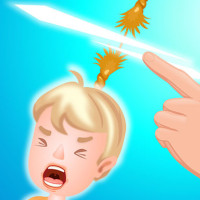


















The Benefits of Early Handcrafting for Children
In the digital age, where screens frequently dominate both adult and children's attention, it is essential to refocus on tactile, hands-on activities that foster creativity and learning. One such activity is handcrafting, which involves using various materials to create decorative or functional items. Introducing children to handcrafting at an early age offers a myriad of benefits that contribute to their holistic development.
Enhances Fine Motor Skills
Handcrafting activities, such as cutting with scissors, molding clay, threading beads, or folding paper, require precise hand movements. These activities help children improve their dexterity, hand-eye coordination, and fine motor skills. Strong motor skills are crucial for everyday tasks, such as writing, buttoning clothing, and using utensils.
Stimulates Creativity and Imagination
Engaging in handcrafting allows children to think outside the box and express themselves creatively. They learn to experiment with different materials, colors, and textures, fostering an imaginative mindset. This creative exploration is not only enjoyable but also helps develop problem-solving skills and innovative thinking.
Builds Confidence and Self-Esteem
Creating something with their own hands gives children a sense of accomplishment and pride. Completing a project, whether it is a simple paper hat or an intricate piece of art, boosts their self-esteem and reinforces the idea that they can set goals and achieve them. This confidence can translate into other areas of their lives, encouraging a positive, can-do attitude.
Promotes Patience and Perseverance
Handcrafting often involves multiple steps and requires attention to detail. Children learn the value of patience and perseverance as they work through the process of creating something. They understand that perseverance pays off when they see the final product, teaching them to take their time and be meticulous in their efforts.
Fosters Emotional Expression and Mental Well-being
Artistic activities offer an excellent outlet for children to express their emotions and thoughts. The process of handcrafting can be therapeutic, helping them to relax, focus, and even manage stress. When children engage in creative activities, they can communicate feelings that they might not yet have the words to express, contributing to their emotional development and overall mental well-being.
Encourages Social Interaction and Teamwork
Handcrafting can be a social activity when done in groups, whether at home, in school, or in community centers. Collaborative projects teach children about teamwork, sharing, and respecting other people’s ideas and creations. These interactions help develop their social skills and empathy, which are vital components of emotional intelligence.
Introduces Basic Academic Concepts
While handcrafting, children often engage with basic academic concepts in an informal and enjoyable way. They practice counting, recognize shapes and patterns, comprehend spatial relationships, and even expand their vocabulary related to materials and tools. These informal lessons can bolster their academic preparedness and interest in learning. Introducing children to handcrafting at an early age is more than just a fun pastime—it lays a foundation for numerous developmental benefits. It enhances their fine motor skills, stimulates creativity, builds confidence, promotes patience, fosters emotional expression, encourages social interaction, and introduces basic academic concepts. As parents and educators, providing opportunities for children to explore handcrafting can enrich their growth and help them discover the joy and satisfaction of making things with their hands. So, the next time you think about activities for your child, consider setting aside the screens and picking up some craft supplies. The rewards will be immense and enduring.






